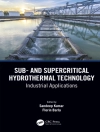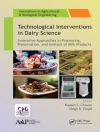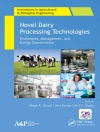Globally, fire retardants are needed to satisfy a multibillion dollar market. Fire retardancy of polymeric materials is an important component of fire safety. Fire retardants either reduce the likelihood of ignition and/or reduce the rate of flame spread and hence, escalation of fire. The need to comply with safety legislations forces industry to use fire retardants in materials in order to save lives. With growing consumer demands and new legislations, the development of new systems is an on-going process, which also involves understanding their mechanisms of action. This book covers the latest developments in fire retardant strategies including: ‘new fire retardant systems (including nanoparticulate fillers, sometimes combined with conventional fire retardants) ‘intumescent formulations and their recent applications in bulk polymers, fibres and textiles ‘test-methods for material flammability ‘material-specific aspects of combustion, smoke and toxicity. Fire retardant strategies covered, include the use of synergistic combinations of alumina with organoclay, organophosphorus compunds, silica and organosilicones, clay-phosphate combinations and a novel tecnhique for investigating fire rerardant behaviour. The section on nanoparticulate fillers includes an investigation on the effect of filler shape, the use of carbon nanofibres and nanotubes, the interpretation of nanocomposite behaviour in the cone calorimeter, and groundbreaking new research on the influence of rheological properties on burning behaviour. The coverage of fibres and textiles includes a discussion on trends in textile fire retardancy and flammability regulations, and some novel halogen-free approaches to fire retardancy of cellulose, acrylic and polypropylene textiles. Finally, the influence of fire retardants on fire toxicity is discussed in detail, followed by an investigation of the toxic products from burning fire retarded polymer nanocomposites. This book will update fire retardant materials’ developers with latest in research and design of new fire retardant materials. It will also provide a snapshot of the state-of-the-art for a range of other groups including environmentalists looking for alternatives to brominated flame retardants and engineers needing to use fire safe materials in their projects.
Mục lục
Chapter 1: Synergy between nanometric alumina and organoclay in conventional fire retardant systems for ethylene-vinyl acetate;
Chapter 2: Strained Organophosphorus Comps;
Chapter 3: Si O2 FR for polyamide;
Chapter 4: Use Of Organosilicone Composites As Flame Retardant Additives And Coatings For Polyropylene;
Chapter 5: Kaolin TPP for recyled PET;
Chapter 6: Complex Micro-analysis Assisted Design of Fire Retardant Nanocomposites: Contribution to the Nano-mechanism;
Chapter 7: Impact of Nano-Particle Shape On The Flammability Of Nanocomposites;
Chapter 8: Thermal and combustion behaviour of polymer-carbon nanofibre composites;
Chapter 9: Combination of carbon nanotubes with fire retardants: the thermal and fire properties of polystyrene nanocomposites;
Chapter 10: Nano fire behaviour using cone;
Chapter 11: P FR Epoxy nanocomposites;
Chapter 12: Study of the Relationship Between Flammability and Melt Rheological Properties of Flame Retarded Poly(Butylene Terephthalate) Containing Nanoclays;
Chapter 13: FR Epoxy composites;
Chapter 14: Image Analysis of 2D Intumescent Char Sections to Estimate Porosity;
Chapter 15: Modelling of intumescent coating;
Chapter 16: Fire Retardancy and Fire Protection of Materials using Intumescent Coatings – A Versatile Solution?;
Chapter 17: Trends in textile FR;
Chapter 18: New Textile Flammability Regs;
Chapter 19: N + P FR on cellulose fabrics;
Chapter 20: Synergistic flame retardant copolymeric polyacryonitrile fibres containing dispersed phyllosilicate clays and ammonium polyphosphate;
Chapter 21: Flame retardance of polyacrylonitriles covalently modified with phosphorus- and nitrogen-containing groups;
Chapter 22: FR Back-coated textiles;
Chapter 23: FR PP Textiles;
Chapter 24: Influence of fire retardants on toxic and environmental hazards from fires;
Chapter 25: Assessment of fire toxicity from polymer nanocomposites
Giới thiệu về tác giả
T Richard Hull is Professor of Chemistry and Fire Science at the University of Central Lancashire. His research focuses on fire retardancy and toxicity and he was involved in the development of the first ISO standard for assessment of fire gas toxicity. He has collaborated extensively with the main fire retardant groups across the globe. A recurrent theme in his work is the use of instrumental methods to understand fire behaviour. Baljinder K Kandola is Professor of Materials Fire Science at the University of Bolton, UK. Her career started with a Ph D in chemistry and she has since worked on a range of multidisciplinary research projects involving chemistry, textiles, mechanical engineering and mathematics. Her interests are focused on fire retardancy of natural fibres, thermoplastic fibre-forming polymers and thermoset polymers. Her recent research includes burning and burning induced degradation of mechanical properties of fibre reinforced composites.












